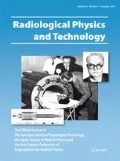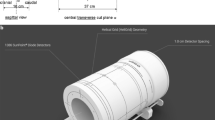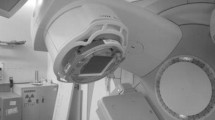Abstract
Recently, the number of patients undergoing intensity-modulated radiation therapy and volumetric modulated arc therapy has increased with the expansion of the adaptation site. However, it is necessary to improve the efficiency of time-consuming dose verification. Therefore, patient-specific quality assurance is expected to shift from dose verification using a conventional ionization chamber dosimeter and film to a three-dimensional dose verification system. However, caution is required when using a three-dimensional dose verification system, especially when it comes to the calibration of the detector. Calibration is performed regularly, but not all necessary verifications are done routinely. There are many uncertainties on how the sensitivity of the three-dimensional dose verification system changes over time. In this study, on the same day, when dose verification using a three-dimensional system for one head and neck case was performed, dose verification using a conventional ionization chamber dosimeter and film was also performed once every two months, for 2 years. From the results of the absolute dose and dose distribution verification using the ionization chamber dosimeter and Gafchromic film, the output of the linear accelerator, mechanical accuracy and precision were secured. From the results of the three-dimensional dose verification system, when the distance to agreement was evaluated at 2 mm and 3 mm, and gamma analysis was performed at 2 mm/2% and 3 mm/3%, the passing rate was almost 100%, and a sensitivity change in 2 years was not observed.







Similar content being viewed by others
References
Rogers DWO, Cygler JE, editors. Clinical dosimetry measurements in radiotherapy. American Association of Physicists in Medicine; 2009.
Prescribing, recording, and reporting photon-beam intensity-modulated radiation therapy (IMRT): Contents. J ICRU. 2010;10.
Alber M, Broggi S, Carlos De Wagter, et al. Guidelines for the verification of IMRT, ESTRO Booklet No. 9, Brussels, Belgium, 2008.
Li G, Bai S, Chen N, Henderson L, Wu K, Xiao J, et al. Evaluation of the sensitivity of two 3D diode array dosimetry systems to setup error for quality assurance (QA) of volumetric-modulated arc therapy (VMAT). J Appl Clin Med Phys. 2013;14(5):13–24.
Arumugam S, Xing A, Young T, Thwaites D, Holloway L. Comparison of three commercial dosimetric systems in detecting clinically significant VMAT delivery errors. Phys Med. 2016;32(10):1238–44.
Sasaki M, Ikushima H, Tominaga M, Kamomae T, Kishi T, Oita M, Harada M. Dose impact of rectal gas on prostatic IMRT and VMAT. Jpn J Radiol. 2015;33(12):723–33.
Klein EE, Hanley J, Bayouth J, Yin FF, Simon W, Dresser S, et al. Task Group 142 report: Quality assurance of medical accelerators. Med Phys. 2009;36(9):4197–212.
McKenzie EM, Balter PA, Stingo FC, Jones J, Followill DS, Kry SF. Reproducibility in patient-specific IMRT QA. J Appl Clin Med Phys. 2014;15(3):4741.
Acknowledgements
The authors would like to thank Kenji Takimoto (Euro-meditech, Tokyo, Japan), Kanako Sakuragawa (Department of Radiological Technology, Tokushima University Hospital), and Michihiro Yokoishi (Department of Radiological Technology, Tokushima University Hospital) for their help and discussions during this work. This manuscript was partly supported by Akiyoshi Ohtsuka Fellowship of the Japanese Society of Radiological Technology for improvement in English expression of a draft version of the manuscript.
Author information
Authors and Affiliations
Corresponding author
Ethics declarations
Conflict of Interest
The authors declare that they have no conflict of interest.
Human and animal rights
All procedures performed in this study involving human participants were in accordance with the ethical standards of the institutional and/or national research committee and the 1964 Declaration of Helsinki and its later amendments or comparable ethical standards. This study does not involve any kind of animal experimentation.
Informed consent
Informed consent was obtained from all individual participants included in the study.
Additional information
Publisher's Note
Springer Nature remains neutral with regard to jurisdictional claims in published maps and institutional affiliations.
About this article
Cite this article
Sasaki, M., Ikushima, H., Sugimoto, W. et al. Long-term stability of a three-dimensional dose verification system. Radiol Phys Technol 13, 83–91 (2020). https://doi.org/10.1007/s12194-020-00554-7
Received:
Revised:
Accepted:
Published:
Issue Date:
DOI: https://doi.org/10.1007/s12194-020-00554-7




